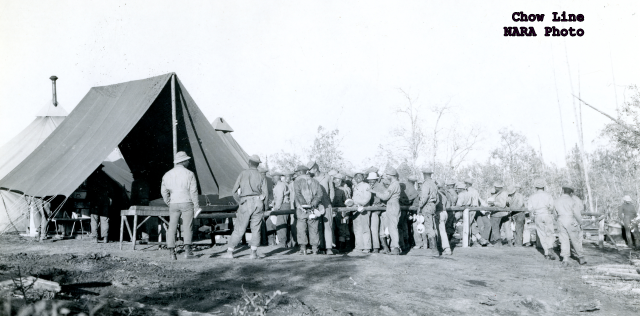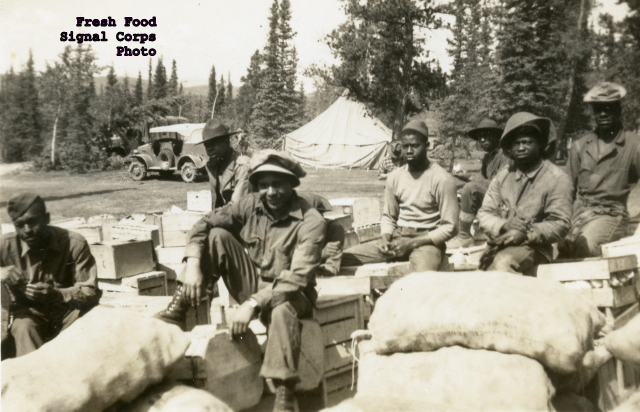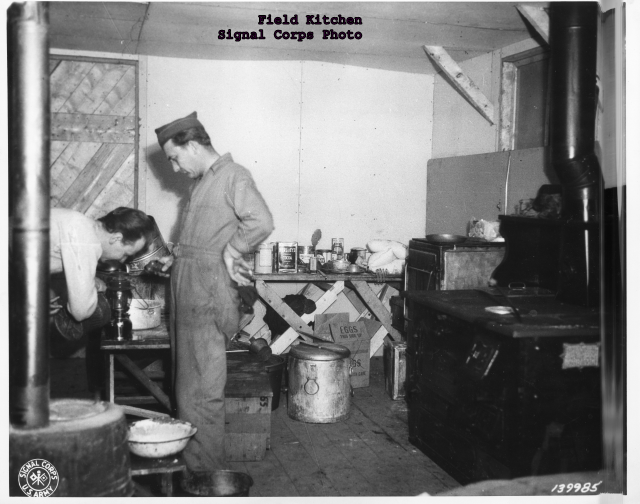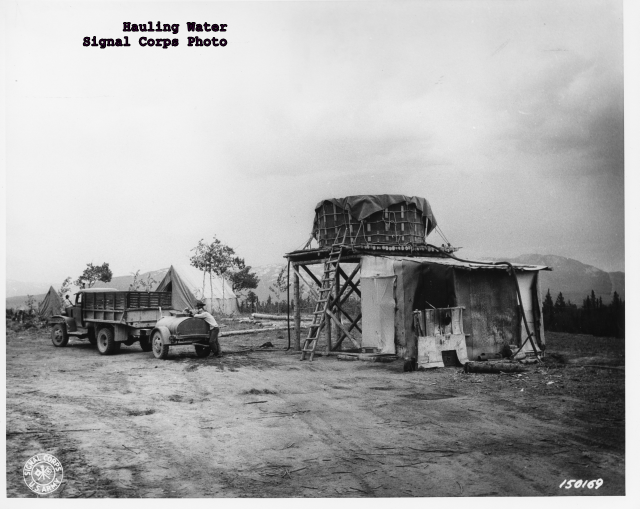
Food topped the list of things every soldier on the Alaska Highway in 1942 absolutely despised. Without exception, the soldiers hated their monotonous and dismal meals. Fresh food supplemented endless field rations, but only intermittently. One company of the 93rd Engineers actually had no cook stove; the mess sergeant made do with an open fire and an oil drum oven.

Leonard Cox of the 340th Engineers loved it when Mutton made it to the field. When mutton appeared in the mess, Leonard could eat all he wanted, because everybody else hated it.
Lt. Walter Dudrow of the 93rd remembered mutton the way most of the men did. “The cooks tried many ways to make this ‘damn’ goat taste good, but we had it too often.”

When they could, the soldiers supplemented their rations themselves with moose, bear and fish. Andrew Jackson of the 97th remembered, “Bear steaks taste as good as T-bone steaks.”
Mostly, though, the soldiers subsisted on dehydrated eggs and potatoes, insect dotted pancakes and most of all canned meat and chili. William Griggs of the 97th told an interviewer, years later, about taking chili to a nearby native village and trading it for smoked salmon. “Finally, the Indians told us to bring something else to trade. They were tired of the chili.”
The soldiers despised the fare, but they ate it. And men who eat, to put it somewhat delicately, eliminate. Companies in the field had to get rid of garbage and “eliminations”. Chester Russell of the 35th described the problem this way.
“You’ve got a regiment of men up there, no water, no toilet facilities and you’ve got to make up this camp, toilets, garbage pits. And you’ve got to dig through this ice, and you’ve got one air compressor, and all the rest is picks. You hit that old ice with a pick and it just bounced back in your face. Every time you moved, they had to dig out the garbage pits… and then when they moved again, they’d cover them all up and put a sign up saying what it was, garbage pit or a latrine.
